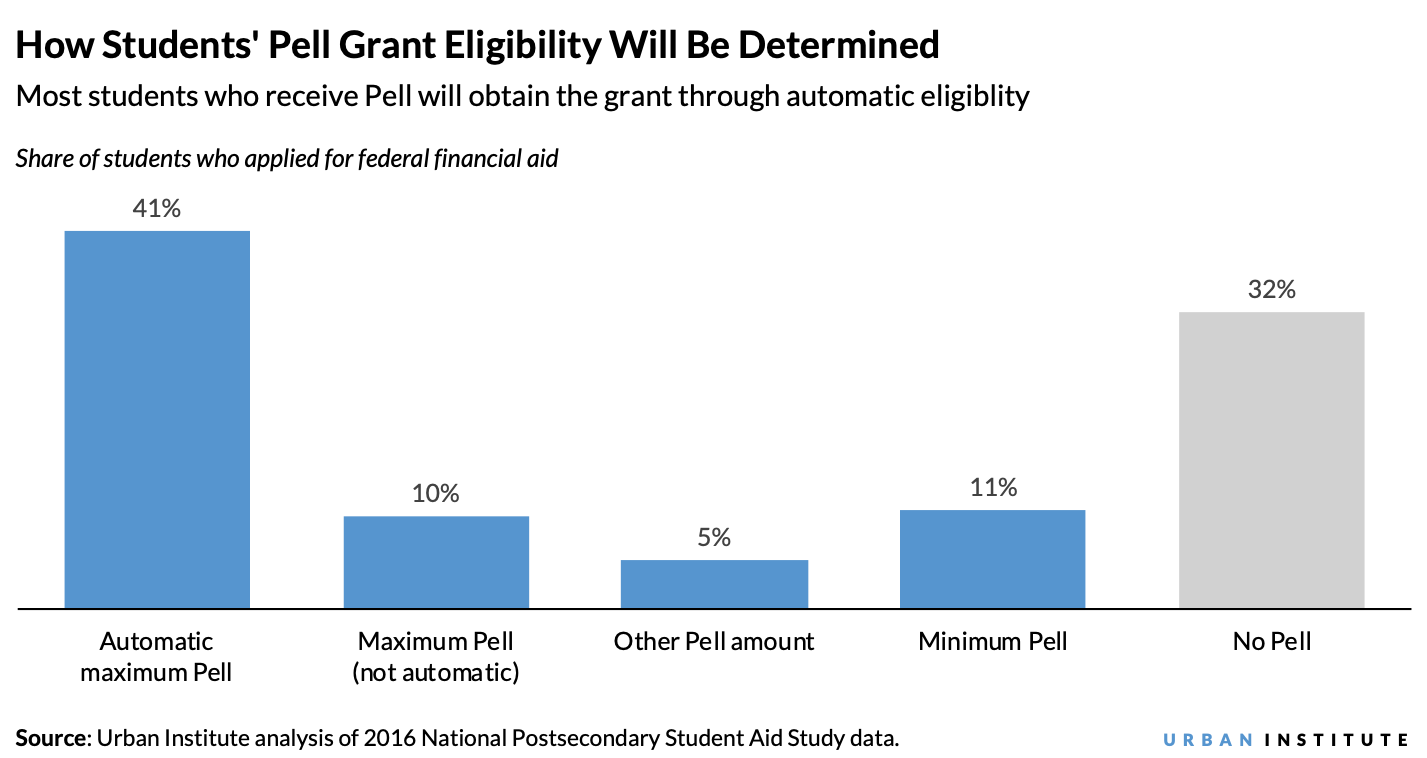
<p>(gorodenkoff/Getty Images)</p>
The FAFSA Simplification Act, passed into law as part of a broader pandemic relief package in early 2021, is the culmination of a years-long effort to simplify access to federal Pell grants. Under the new rules, potential students will have a better sense of whether they’ll receive a Pell grant, based primarily on their family size and income. These changes will guarantee that most students with low incomes receive the largest grant possible without significantly altering the overall distribution of grants.
The bipartisan deal to simplify the Free Application for Federal Student Aid (FAFSA), which students must fill out to be eligible for federal grants and loans, reduces the number of questions from 108 to 36, guarantees minimum or maximum Pell grants to students whose family incomes are below a given threshold based on the federal poverty level, and changes the formula used to determine eligibility for student aid (the Expected Family Contribution, which it renames the Student Aid Index). These changes will go into effect for the 2024–25 school year.
To understand how the new formula affects students’ Pell grants, we used the data (from 2015–16) and model from our Pell Grant Reform Simulator to approximate the impact of three key changes. First, the maximum Pell grant (currently $6,495 per year for full-time enrollment) will be automatically provided to aid applicants from households that earn less than around twice the federal poverty level for their household size. Second, the minimum grant (about $650) will be guaranteed to students from a household earning below 275, 325, 350, or 400 percent of the poverty level, depending on household structure. And finally, the Student Aid Index (SAI) will no longer lead to greater financial aid for families with multiple children in college.
A stable distribution of benefits
Overall, the new Pell simplification policies do not appreciably change the distribution of Pell grant aid. Our estimates indicate that most students will receive roughly the same amount of Pell funding as they would have previously. The share of students receiving Pell will increase modestly, from 42 to 45 percent, and the average Pell award amount will hold steady at around $3,900.
Although we project that many students will receive a Pell grant award similar (within $500) to what they would have received previously, some students will see substantial changes.

Dependent students in the second ($38–$75,000) and third ($75–$125,000) income quartiles will experience the most change in their Pell awards. First, a small share of dependent students who were previously ineligible for Pell would receive a small grant. This is because of the minimum grant guarantee, which will reach dependent students from a two-parent family of four with incomes below about $73,000 and those from a one-parent family of four with incomes around $86,000 or less.
Second, eliminating the policy that allows a more generous need calculation for families with more than one child in college could lead to a smaller Pell award for a small share of families of dependent students in the second and third income quartiles. Thirteen percent of those who applied for aid as dependent students in the second income quartile could see a decline of more than $500 in their Pell award, and 7 percent of those in the third income quartile could see a similar decline. However, this only approximates the new rules for siblings. Other adjustments (PDF) we do not model, such as an increase in the income protection allowance—the amount of earnings families can shield from consideration for aid calculation—could offset much of this effect.
A substantial share (12 percent) of independent students without children will receive increased award amounts, relative to what they would have received under the previous formula. This is likely because of the automatic maximum Pell guarantee, which provides a full Pell award to single independent students with incomes below roughly $22,500.
Automatic maximum Pell will reach most low-income students
One of the downsides of the current Pell formula is that most students do not learn how much they will receive until after they fill out the FAFSA, which many do not do until they have decided where to go to college. As a result, college may seem unaffordable for students who would receive a significant grant but don’t know it.
The formula changes will make it much easier to communicate to students their likely eligibility for the maximum Pell award before they fill out a FAFSA, and our estimates indicate that the automatic maximum will reach most low-income students. Among students who will receive the largest award possible under the new formula, roughly five of six will receive it automatically based on their family’s income and household size (the others will receive it based on the more complicated calculation that takes into account additional factors). This means high schools, education nonprofits, and others can reach out to low-income families and give them a clearer sense of the aid they would receive.
Overall, 76 percent of Pell recipients will receive the maximum, 16 percent will receive the minimum, and 8 percent will receive an amount in between. This is a significant shift from the current formula, under which 60 percent of Pell recipients get the maximum award.

Receipt of a Pell grant increasingly enables simplified eligibility for other aid, such as discounts for internet access provided by the Emergency Broadband Benefit (EBB) program or increased likelihood of emergency financial assistance (PDF) from the CARES Act. This means the minimum Pell guarantee will also translate into a guaranteed benefit from EBB and other programs similarly linked to Pell receipt.
Overall, we find the FAFSA Simplification Act does what it says on the tin: starting in 2024–25, most students will get a similar award to what they receive today without having to answer as many questions on the FAFSA. And most of the students eligible for the maximum award can know before they’ve even opened the FAFSA.
This evidence, combined with research showing that reducing complexity and uncertainty around financial aid can increase college enrollment, suggests that the changes being rolled out in the coming years could help lead to significantly improved educational outcomes among students from low-income families.
The Urban Institute has the evidence to show what it will take to create a society where everyone has a fair shot at achieving their vision of success.
Let’s build a future where everyone, everywhere has the opportunity and power to thrive
Urban is more determined than ever to partner with changemakers to unlock opportunities that give people across the country a fair shot at reaching their fullest potential. Invest in Urban to power this type of work.